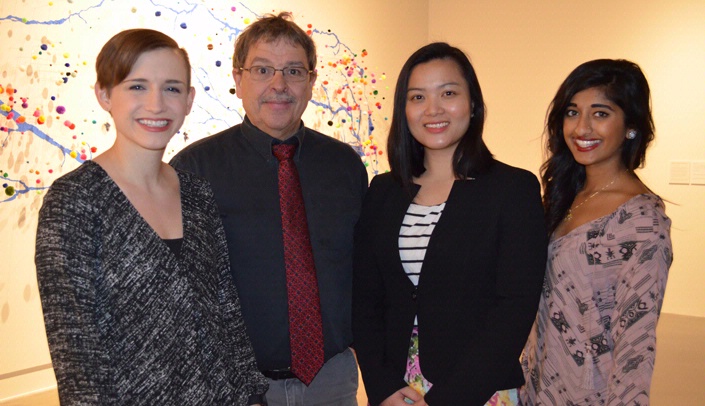Issues regarding water are integral to public health, so it was only natural that KANEKO turned to UNMC’s College of Public Health to help with its newest exhibit — “WATER” — that opened earlier this month.
Water is theme for SciFest event
As part of the citywide 2016 Nebraska Science Festival, KANEKO will host H2Omaha, a free, public event with a full day of family-friendly activities and water-themed fun beginning at 11 a.m. on April 19.
Areas to explore will be: Backyard-Biology using citizen scientists, area urban sustainability and stewardship efforts, and STE+[A]M innovation and creativity through multiple learning stations throughout the KANEKO galleries with scientific activities and experiments that the whole family can enjoy.
Alan Kolok, Ph.D., director of the Center for Environmental Health and Toxicology, and three master’s of public health students helped with the overall planning and setup of the exhibit, which is open through April 23.
Dr. Kolok, who also is director of the Nebraska Watershed Network at the University of Nebraska at Omaha, was asked by KANEKO last fall to contribute to the multi-disciplinary exhibit that explores water through science, art, innovation and education.
He enlisted students Madeline Howell and Trang Hoang, second-year environmental health and toxicology, and Sanjana Ramesh, first-year health promotion, social & behavioral health, to develop scientific themes.
“This provided us the opportunity to show the community how water relates to public health,” Howell said.
One scientific concept that translated into artwork was well water contamination by nitrate and atrazine (agrichemicals) that exceeds Environmental Protection Agency drinking standards in observation wells across the state.
Artist Suzan Shutan took this complicated concept and turned it into a two- and three-dimensional map-like view of Nebraska’s rivers. She used different sizes of pompoms to represent quantity of well locations and colored the balls to represent the levels of chemicals above standards.
Atrazine contamination of the Elkhorn River is a project that Hoang is working on. She is in the process of recruiting a cadre of citizen scientists who will measure atrazine levels at 10 different sites over 10 weeks between April and June. Atrazine is the second most used herbicide in the U.S. and has been linked to the feminization of male frogs.
KANEKO also partnered with a number of local and global organizations to explore issues impacting water quality and sustainability. Some artists expressed water as a thing of beauty on its own; others explored the effects of pollution on wildlife.
KANEKO, established by international artist Jun Kaneko and his wife Ree, celebrates creativity in four major programming themes: design, ideas, performance and innovation. A new exhibit is unveiled four times a year.
Admission is free to the gallery at 1111 Jones St., which is open Tuesday through Friday, 2-7 p.m., and Saturday, 11 a.m.-4 p.m.

Thank you, Dr. Kolok. Your lecture in one of my COPH classes was fantastic!